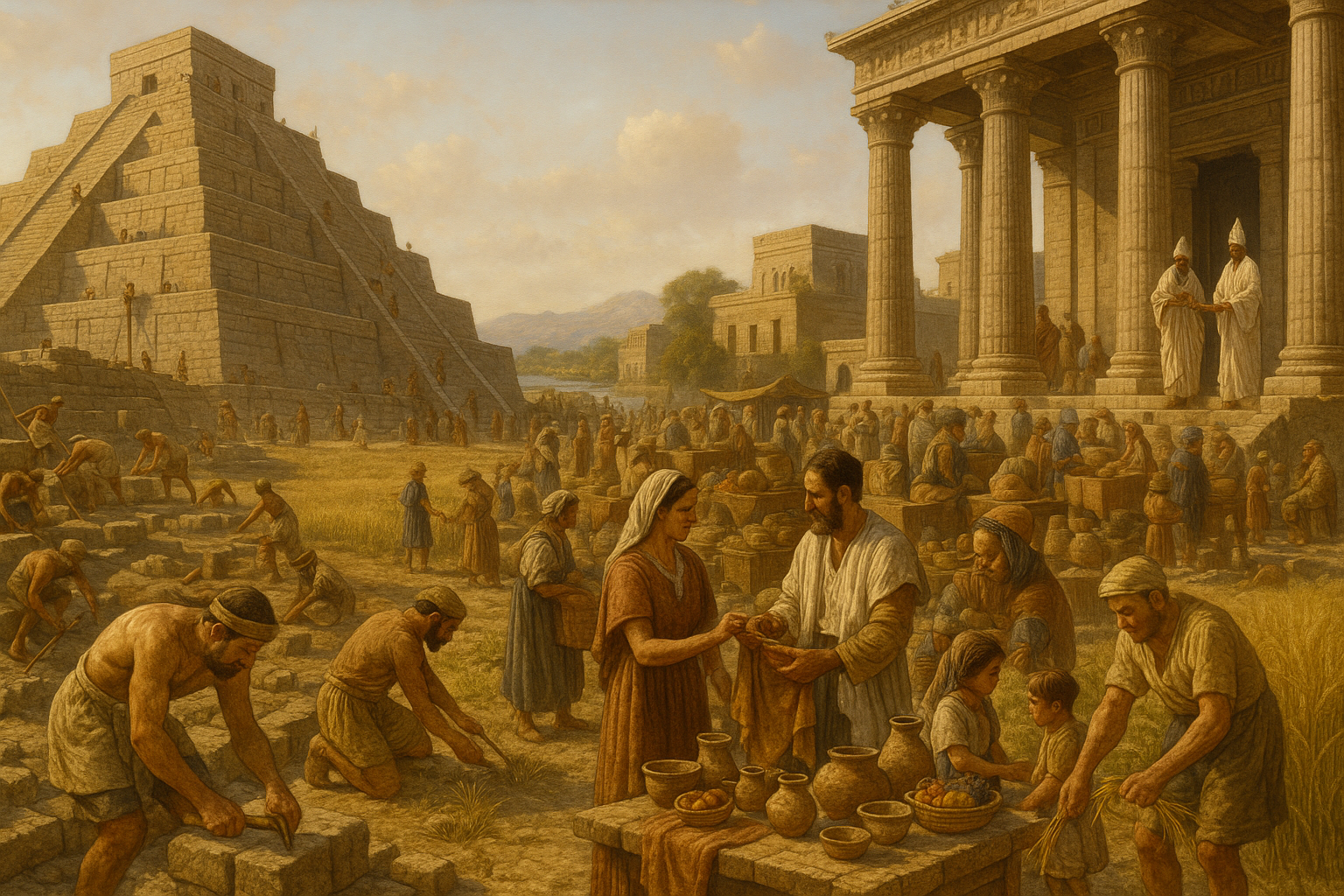Inked in Tradition: The Sacred Rite of Tattooing Passed Down Through Generations
For millennia, the art of tattooing has been more than mere decoration—it’s a vibrant tapestry woven through the fabric of cultures worldwide. Steeped in history and symbolism, this ancient practice transcends generations, embodying a legacy that speaks of identity, spirituality, and societal roles. As we delve into the mystical world of traditional tattoos, a rich narrative unfolds, revealing the significance and sanctity of these permanent marks.
Across continents, tattooing holds diverse meanings, from rites of passage to protective talismans. This exploration will uncover the fascinating traditions from indigenous tribes of the Pacific Islands to the sacred body art of ancient Egyptian civilizations. Each culture offers a unique perspective, demonstrating how these inked symbols serve as powerful tools for storytelling and cultural preservation.
The journey also highlights the techniques and tools passed down through generations, preserving the authenticity of this sacred art form. We will examine the traditional methods still in use today, from hand-tapping to stick-and-poke, emphasizing the dedication and craftsmanship required. This respect for ancestral practices ensures the survival of these cultural treasures in a rapidly modernizing world.
Prepare to be captivated by personal stories and expert insights, illustrating how tattooing remains a profound expression of heritage and individuality. As the needle pierces the skin, it etches a story of resilience, connection, and identity that continues to inspire and transform lives. Discover how these indelible marks stand as timeless testaments to human creativity and cultural richness. 🌍✨
The Historical Roots of Tattooing
Tattooing is an ancient art form that dates back thousands of years. From the elaborate body art of the Polynesians to the spiritual markings of the ancient Egyptians, tattoos have been used as symbols of identity, status, and spirituality. The earliest evidence of tattooing can be traced back to the Neolithic times, with the discovery of Ötzi the Iceman, who had tattoos on his body that are believed to be over 5,000 years old.
In ancient Egypt, tattoos were primarily used for religious and magical purposes. Mummies from this era have been discovered with tattoos, which are thought to have been used as amulets, status symbols, and even as a form of medicine. Similarly, the Polynesian cultures have a rich history of tattooing, where it is considered a sacred ritual. The word “tattoo” itself is derived from the Polynesian word “tatau,” which means to strike or tap.
In Japan, tattoos have a complex history. Initially associated with spirituality and status, they later became linked to criminality during the Edo period. Despite this, traditional Japanese tattooing, known as “irezumi,” continues to be a revered art form, characterized by intricate designs and vibrant colors. Each region and culture has its unique approach to tattooing, yet they all share the common thread of using the body as a canvas to tell stories, honor traditions, and express individuality.
The Cultural Significance of Tattoos
Tattoos have played a significant role in the cultural identity of many societies. In Polynesian culture, for instance, tattoos are a rite of passage, symbolizing a person’s journey through life. Each tattoo is unique and carries deep personal meaning, often representing one’s genealogy, status, and achievements. The process of receiving a tattoo is a communal event, with family and friends gathering to support and celebrate the individual.
In Native American cultures, tattoos serve as a connection to the spiritual world. They are believed to provide protection, strength, and guidance. The designs often feature animals, celestial bodies, and natural elements, reflecting the deep respect and reverence for nature and the universe.
Similarly, in Maori culture, tattoos, known as “ta moko,” are a sacred tradition. The intricate designs are carved into the skin using chisels, creating raised patterns that are unique to each individual. These tattoos tell the story of the person’s ancestry, achievements, and social status. The process is considered highly spiritual, and the tattoos are viewed as a symbol of pride and identity.
The Tattooing Process: A Sacred Rite
The act of tattooing is more than just a physical procedure; it is a sacred rite that involves ritualistic practices, especially in traditional cultures. In Polynesian societies, the tattooing process is conducted by a “tufuga,” or master tattooist, who is highly respected and skilled in the art. The procedure is performed with tools made from natural materials such as bone and wood, and the ink is derived from plant-based sources.
The process is often accompanied by chanting and music, creating a spiritual atmosphere. It is not uncommon for the person receiving the tattoo to undergo fasting and meditation beforehand to prepare themselves mentally and spiritually. The tattoo itself is applied through a series of taps, using a comb-like tool to embed the ink into the skin. This method, while painful, is considered a test of endurance and courage, reflecting the individual’s strength and commitment.
In Japan, traditional tattooing, or “tebori,” involves the use of a hand-held tool to manually insert the ink into the skin. This technique requires immense skill and patience, as the artist carefully creates intricate designs that can take years to complete. The experience is deeply personal and often involves a strong bond between the tattoo artist and the recipient.
Symbolism and Design in Tattoos
Tattoos are rich in symbolism, with designs often carrying deep personal and cultural significance. In Polynesian cultures, tattoo designs are heavily influenced by nature, with motifs such as waves, turtles, and sharks representing the connection to the ocean. Geometric patterns and shapes are also prevalent, symbolizing unity, continuity, and the cyclical nature of life.
In Japanese tattooing, designs often feature mythical creatures such as dragons and phoenixes, representing strength, wisdom, and rebirth. Floral motifs, such as cherry blossoms and chrysanthemums, are common and carry meanings related to beauty, transience, and the impermanence of life.
Native American tattoos often depict animals, each carrying its unique symbolism. For example, the eagle represents freedom and vision, while the bear signifies strength and courage. These designs are not only decorative but also serve as spiritual guides and protectors.
The Global Spread and Evolution of Tattooing
The art of tattooing has undergone significant transformation over the centuries, evolving from a sacred tradition in specific cultures to a global phenomenon embraced by people worldwide. The spread of tattooing across different continents can be attributed to exploration, trade, and cultural exchange. Sailors played a significant role in popularizing tattoos in the West, as they encountered and adopted the art form from indigenous cultures during their voyages.
In the late 19th and early 20th centuries, tattoos became associated with subcultures and fringe groups, such as sailors, bikers, and punk rockers, who used tattoos as symbols of rebellion and non-conformity. This period also saw the development of new techniques and tools, including the invention of the electric tattoo machine, which revolutionized the industry by making the process faster and more accessible.
Today, tattoos are a mainstream form of self-expression, transcending cultural and societal boundaries. With the rise of social media and tattoo reality shows, the art form has gained widespread acceptance and appreciation. Tattoo conventions, studios, and artists have proliferated globally, showcasing diverse styles and fostering a sense of community among tattoo enthusiasts.
Table of Tattoo Styles and Their Origins
| Style | Origin | Characteristics |
|---|---|---|
| Polynesian | Polynesia | Geometric patterns, nature motifs |
| Irezumi | Japan | Mythical creatures, floral motifs |
| Ta Moko | New Zealand (Maori) | Chiseled patterns, ancestral symbolism |
| Tribal | Various Indigenous Cultures | Bold black lines, cultural symbols |
| Realism | Contemporary | Detailed portraits, lifelike imagery |
The Role of Tattoos in Modern Society
In contemporary society, tattoos have become a popular and widely accepted form of art and personal expression. Once considered taboo in many cultures, tattoos are now embraced by individuals across all demographics, from celebrities and professionals to everyday people. This shift in perception is largely due to changing societal norms and the growing recognition of tattoos as a legitimate art form.
One of the driving forces behind the popularity of tattoos today is the desire for self-expression. Tattoos allow individuals to showcase their personalities, beliefs, and life experiences in a unique and permanent way. They serve as visual narratives, capturing moments, memories, and emotions that are significant to the individual.
Moreover, tattoos have become a means of fostering a sense of community and identity. Many people choose to get tattoos that symbolize their affiliation with particular groups, causes, or movements. This can range from sports teams and music bands to social and political causes. Tattoos serve as a unifying symbol, creating a sense of belonging and shared identity among individuals with similar interests and values.
Popular Tattoo Motifs and Their Meanings
- Anchor: Symbolizes stability and hope, often associated with sailors.
- Infinity Symbol: Represents eternity, endless possibilities, and the cycle of life.
- Lotus Flower: A symbol of purity, enlightenment, and spiritual awakening.
- Feather: Represents freedom, transcendence, and the connection between the earthly and spiritual realms.
- Heart: Universally recognized symbol of love, passion, and emotion.
- Compass: Represents guidance, direction, and the journey through life.
- Arrow: Symbolizes focus, determination, and moving forward.
- Wolf: Represents loyalty, strength, and the importance of family and community.

Conclusion
In conclusion, the art of tattooing has evolved from a sacred rite to a globally recognized form of self-expression, weaving together threads of history, culture, and personal identity. Throughout generations, tattoos have served as powerful symbols, narrating stories of ancestry, status, and spirituality. **Importantly,** while modern tattooing embraces contemporary styles and techniques, it continues to honor its traditional roots. The intricate designs and motifs, from Polynesian geometric patterns to Japanese mythical creatures, underscore the rich cultural tapestry that tattoos represent. **Moreover,** the tattooing process itself remains a transformative experience, imbued with ritualistic elements that connect individuals to their heritage and community.
In today’s society, tattoos transcend cultural boundaries, offering a canvas for individuals to showcase their unique stories, beliefs, and aspirations. **Additionally,** the acceptance of tattoos as a legitimate art form has fostered a vibrant community, uniting enthusiasts across the globe. The artistry and skill of tattoo artists are celebrated, elevating tattoos from mere body adornments to revered works of art. **Ultimately,** as tattoos continue to evolve, they retain their core essence—a timeless art form that bridges the past and present, embodying the enduring human desire for connection and self-expression. 🎨
Toni Santos is a visual storyteller and experimental artisan whose work explores the strange frontiers where science meets art. Fascinated by the forgotten, the obscure, and the wonderfully absurd, Toni brings bizarre scientific experiments to life through provocative visual narratives and handcrafted creations that blur the line between curiosity and discovery.
His journey is rooted in a passion for the eccentric side of science — from electric shocks on cadavers to botany in hostile environments, from Victorian medical oddities to animal behavior gone rogue. Each project Toni undertakes sheds light on real (and sometimes questionable) scientific ventures that push the boundaries of human understanding.
With a background in visual design and hands-on craftsmanship, Toni blends artistic precision with conceptual boldness. His creations aren’t just decorative — they provoke, disturb, and invite the viewer to reconsider what counts as science, progress, or even sanity. Often inspired by true experiments — like galvanic resurrection, psychological endurance tests, or 19th-century pseudo-science rituals — Toni’s work reanimates these bizarre chapters of history with aesthetic intrigue and critical reflection.
As the creative force behind Vizovex, Toni invites you to explore a world where the strange becomes symbolic, the grotesque becomes beautiful, and every experiment tells a story worth unearthing.
His work pays tribute to:
The brilliant madness of forgotten experiments
The symbolic power of science at the edge of reason
The beauty in questioning what we think we know
Whether you’re a curious mind, a lover of scientific history, or simply drawn to the uncanny, Toni welcomes you to explore a realm where aesthetics and absurdity collide — one experiment, one mystery, one creation at a time.





